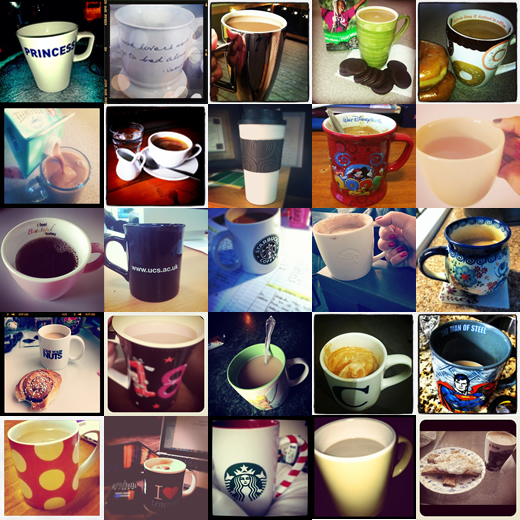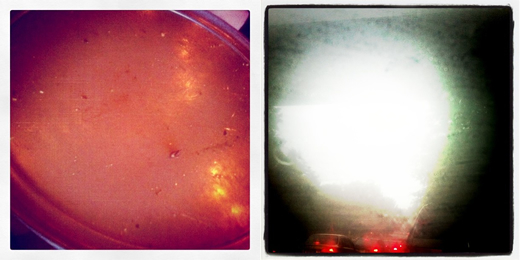Why I Hate Instagram
A small warning for those who intend on reading further. This is highly opinionated and full of half-formed arguments. It’s cathartic for me, the author, but you, the reader may feel that the following 10 minutes of your life have been taken from you in an unjust manner. Let me remind you that you’re still reading, and those who have not had their curiosity tickled in the right place by now, probably won’t garner anything from this post anyway.
It used to be, that in order to take photographs that had any real value, you had to be familiar with some basic photography standards. Often that meant that you had to have at they very least spent, I don’t know, a week or two with the craft to pick up the concept and understand how the camera worked. You would learn about shutter speed and aperture, about exposure and film sensitivity, possibly even about the development process and all sorts of peripheral skills to boot (how to open a canister of 35mm film, and wind it on to a spool in complete darkness for example).
These days (said the rapidly aging old man approaching his 29th birthday) you need to worry about nothing short of what deplorable, despairing filter one might apply to the photo and to what degree you’d like to contribute to the already vastly overflowing web with pictures of your half-filled coffee cup and almond biscotti.

The mug. A hipster’s portable Eiffel Tower, but more photographed.
Now, I’m not suggesting for a moment that anyone who takes photos needs to be a photographer, or that using Instagram brings you any closer to being a professional image maker in any respect. That said, given the abundance that people use it, and willfully share their creations, one might be led to assume that Instagram was a viable alternative to using a regular camera to take regular photos.
“Oh, but Alex, a regular camera would be expensive, and Instagram is free. It’s free Alex, and I only need to point-and-click, and it makes the pictures which I had previously disregarded as worthless, look amazing. Amazing Alex, it makes them look really cool and artsy. And we’re creating memories Alex. Memories.”
So instead of taking a nice photo of something, giving you a clear, insightful image to remember it by, you take a cropped-down, faux-Polaroid, over-saturated, part-blurry, badly framed and old-timey-ised half-photo.

Imagine you were stuck in the Antarctic for years and years, doing research in some isolated remote camp, and you really longed for your family (who you had to leave back home in the UK years ago). It had been literally years since you had seen them. You didn’t have Skype, or email, or a satellite phone. No method of communication, but you just wanted to see your family. But somebody said they could probably get a few photos of your family posted down if you were able to cover the extortionate cost of delivery. You were at your witt’s end, and you’d almost forgotten what your partner even looked like, whether your child was right-handed or left, and whether your trusty dog was called Benji or Bobo. You were just about as desperate as you could possibly imagine, and some poor soul had decided to traverse half the world, going hugely out of their way just to get you a picture of your beloved family, who still loved you very much. Your photos finally arrive, and instead of nice clear pictures of your family that you could stroke longingly, bringing a tear to your eye, an eye that had been dry for years, instead of that you got a book full of Instagram photos. A book. Not even a couple, or a few, but a veritable bible of Instagram photos, their abundance in this book so much so, that you could effectively use it as a flickbook of all the years you had missed. Every single one, badly cropped and framed as if taken by a child. Each one over-saturated or completely washed out so as to make them almost completely indistinguishable. Imagine how brutally disgusted you would be. You wouldn’t hesitate to use it as kindling for that afternoon’s fire. Despite having a huge pile of dry brush, perfect for kindling and no danger of a shortage of perfect firewood, you’d probably still use that book of Instagram photos first, wouldn’t you? You would. Definitely.
Instagram is the new lens-flare.
You’ve probably noticed churches and their charmingly unavailing dedication to entice youngsters in to religion with poster-text along the lines of “Jesus is hip, and he’s got a Mars bar for you, if you believe.” or “Do you like ice cream? The lord has risen (and thought of a new flavour, called prayer-nut and caramel-Sunday-service)”. More often than not though, unfortunately what you notice is that the text is accompanied with a picture of a rainbow or a nice landscape and undoubtedly a lens-flare or two. A lens-flare being the 90’s digital representation of trying just slightly too hard to be cool and trendy. The lens-flare Photoshop effect is the ineffective accompaniment to an often otherwise unspoilt design. It was the go-to design effect of the 90s. A new way to mask your unfortunate inability to create anything beautiful.

Instagram is the new lens-flare. It’s the new delusion. It’s the new fake-authenticity that people crave.
Authentic older photos look like that because of limitations to film and processing techniques. That was not always intentional, and now somehow it’s become trendy. Much like today’s hipsters have the apparent visual aesthetic of the 1890’s, today’s hipster photographs have that same artificial integrity.
What do you expect to do when you’re older, and you’ve actually matured a bit and you want to show kids what things were like in the 2000s? They’ll think everything was all sepia-toned. It’ll be the same effect as when we look back at black and white photographs and imagine that in fact, the world was perhaps black and white back then too. It’s often hard to imagine that the things in a monochrome photograph even had colour to begin with. And so the same thing will happen to our lives. We’ll be forever preserved in sepia, or we’ll be half-obscured by some clumsy faux-vignette for the rest of eternity.
What if photographers these days now want to use a filter or two for genuine artistic effect. I find it hard to believe people won’t just assume it was Instagram-inspired and thus devaluing a legitimate artistic choice (as opposed to a heavily-led artistic faux-pas).
Now, I don’t suppose it would be so bad if people didn’t feel the need to share their “creations”. I mean, people are welcome to enjoy musical theatre, but I don’t have to endure it every time I check on the internet. People can engage in as much scatological consumption as they wish, provided I don’t have to endure such things when I want to catch up with friends on Facebook (oh, the irony). So why is it that the world wide web has embraced Instagram in such a huge way, that checking once respectable blogs gives me a “our favourite Instagram photos this week”, or browsing Twitter gives me “here’s my dinner, as it would have looked in the 1800s”. It’s largely inescapable. It’s in the news and everything.
Why don’t people use their photography equipment to produce the highest quality photos attainable at the time. Needless to say, even in a few years time when you look back – they will likely have become nostalgic and most certainly in a more authentic way. Consider the resolution and visual appeal of the first phone pictures you took. What about the first camera you owned? Why are we not using our cameras to their fullest potential.
So now that I’ve flushed my emotional thoughts out through a badly thought out analogy or two, let’s consider a few other facts.
Once you’ve taken that photo with Instagram and published or displayed it, you’re relinquishing all rights to the photo.
“…By displaying or publishing (“posting”) any Content on or through the Instagram Services, you hereby grant to Instagram a non-exclusive, fully paid and royalty-free, worldwide, limited license to use, modify, delete from, add to, publicly perform, publicly display, reproduce and translate such Content, including without limitation distributing part or all of the Site in any media formats through any media channels, except Content not shared publicly (“private”) will not be distributed outside the Instagram Services.”
The actual quality of the photos taken – even without filters applied, is less than adequate. The dynamic range, the sensitivity to movement, the pixellation at larger sizes. It’s all attributing to the fact that even using a phone’s native photography app is probably an improvement on the decoction that Instagram produces.
I guess if you hadn’t been swayed by this point in the post, what about the fact that Facebook owns it. A billion dollar purchase so that Facebook can continue to own your life.
I don’t suppose there will be any convincing some people. In fact I’m almost fine with that, since when everyone my age reaches 70 and sits down with their kids in some sort of cosy Werther’s Original influenced situation, I’ll be the one showing my grandchildren proper photos of life when I was younger, and everyone else will be merely stoking their short-lived bonfire.
This post was originally written for the QueryClick blog.

About The Author: Alex Cowles
A largely cynical and often sarcastic designer and front-end developer by day. Unknown international DJ & music producer extraordinaire by night (and at weekends). You probably won't like him.


